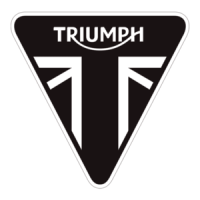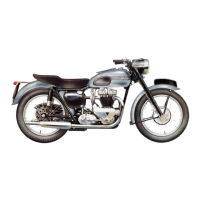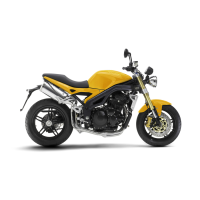Rear Wheel
Final Bearing Adjustinent.
Test the wheel bearings for adjustment now chat
the wheel is in the frame.
Any further adjustment should be made before final
assembly.
The right hand spindle nut should be undone before any adjustment is
made.
Brake.
Pull the brake lever arm back, thread the brake rod through the pivot
roller in the lever arm and screw on the brake adjusting thumb nut until the wheel
can just turn freely without the brakes binding. If new linings have been fitted,
it
may be necessary to bed the brakes in before adjustment can be made, allowing the
wheel to run freely.
Rear Chain. Fit the
chain round the sprocket and replace the spring link so hat
the closed end is facing the direction of chain travel.
Mudguard.
Re-assemble the mudguard to the frame and reconnect the tail lamp
leads under the saddle.
Road Test.
Check the working of the stop light and after road testing, make the
final adjustments to the brake.
REAR
WHEEL
(SWINGING
FORK FRAME)
This wheel
is
mounted on journal ball bearings and therefore'requires no adjustment.
Slackness in the bearings can be checked by
first
placing the machine on the central
stand and then testing the lateral movement which should be hardly perceptible if
the bearings are in good condition.
Other details are
as
the rear wheel fitted
in
the rigid frame.
REMOVING THE REAR WHEEL FROM THE FRAME
Rear Chain.
Depress the gear lever to make sure that the gearbox
is
not in
neutral.
This prevents the chain rotating on the gearbox sprocket and failing off
when the spring link
is
removed.
Remove the spring link and clear the chain from
the sprocket.
Brake Torque Stay.
Remove the rear nut and loosen the front nut and bolt.
Brake Adjusting
Nut.
Unscrew
this
nut and remove the brake rod from the
lever arm.
Spindle Nuts.
Unscrew the two spindle nuts and remove from the spindle,
Chain Adjuster Assembly. Pull the wheel back in the frame a short distance
and disconnect the adjuster assembly from the spindle.
Wheel.
Fig.
49
clearly indicates the method of withdrawing the wheel from the
frame. If a prop stand
is
fitted,
it
is advantageous to lower
it
in order to steady the
machine during this operation. When the machine
is
at the right angle, the wheel
can be easily removed.

